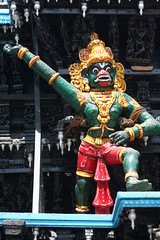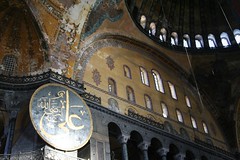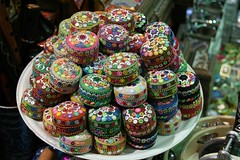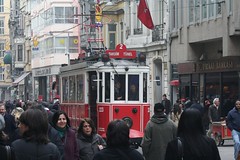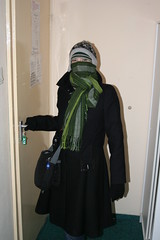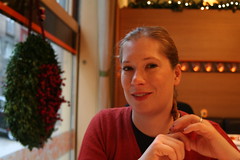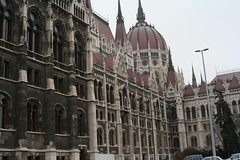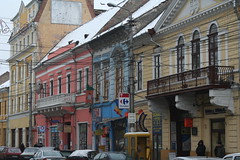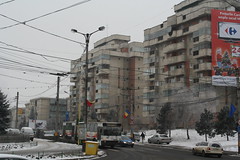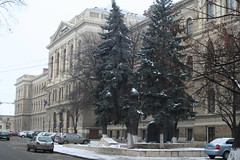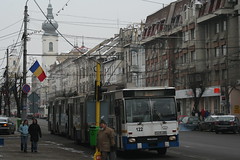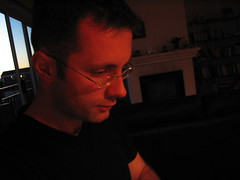It’s been already two weeks since we arrived in India. Moving at a steady pace, without staying more than three nights in one spot, we have seen almost all the places worth seeing in the south of Kerala and made forays into Tamil Nadu. It’s too much time and too many events to put into separate stories on the blog, so I will compress it all, dispense with the superfluous adjectives and go for elementary, condensed bullet points.
-
Culture shock, anyone? – India is different, strange and vaguely unsettling. Even after crossing three continents and becoming a battle-hardened world traveler, I still have room for the overloaded sensory experience that is India. There are so many little facets, quirks, nuts and bolts that come together to create its peculiar identity that it’s hard to even come up with a start to describe it. Is it the incredible number of people who swarm the streets, moving fast, guided by mysterious mundane purposes? Is it the chaos and jumble of the cities, the mountains of garbage that clog every back alley, or the odd absence of sidewalks? The multitude of language and scripts, none of them familiar? Or maybe the abundance of fragrances and foods, of which only a few are known to the western traveler from the scoped-down Indian restaurants from back home? And the list goes on...Save the cows
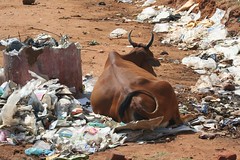
Click photo to see slideshow
or here for all Trivandrum pictures - Post office – we seem to always have to send parcels home, no matter where we go. On the first day of our arrival in Trivandrum, we ran to the post office right after checking in into our hotel. We had to get rid of a mountain of winter clothes which had become useless – there would be no cold weather for the rest of this trip. The post office clerk was very forthcoming when we explained that we wanted to send a package to America, but became puzzled when I asked where I could get a box. “No boxes accepted,” he said, “you have to wrap everything in cloth”. I had a vision of myself buying a couple of square meters of cotton fabric and sewing it painstakingly into an amorphous bundle, but there was no need for that – the clerk took us to a tailor nearby who pressed and folded the whole medley of clothes, shoes and accessories and hemmed a bag of just about the right size for it, then stitched it shut and sealed it with wax, exactly as the post office wanted it. We overpaid for this service, but what the hell! – Nothing beats getting rid of 20 pounds from your backpack.
-
Go south, they say – a few of our Indian friends and coworkers told us to go to the south of India rather than the north; that the south is more relaxed and more beautiful. We followed their advice started with the south, but I haven’t been much impressed so far. The tropical scenery is less impressive than the one in Central and South America, the heat is about the same, the beaches are average, and the wildlife-watching opportunities are pitiful – the Periyar Wildlife Sanctuary is an overpriced racket; it shelters nothing but a clan of opportunistic, tourist-harassing monkeys. You may see a few elephants and deer in the woods along Lake Periyar, but spotting a tiger is as likely as winning the lottery. The renowned Kerala Backwaters, a network of shallow lagoons and brackish lakes that extend inland along the Arabian Sea coast, are good, relaxing places for a boat cruise, but they are not something to praise in awe. There’s little history to be seen here with the notable exception of the Padmanabhapuram palace, which houses one of the finest examples of Indian woodwork.Sunset in Varkala
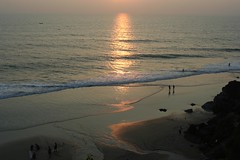
Click photo to see slideshow
or here for all Varkala/Backwaters photos -
Why visit India? – I don’t understand the urge of some western travelers to come to India in search of spiritual fulfillment. A more profound or more troubled spirit than I am may be able to find a meaningful justification to this bewildering quest; barring this inscrutable aspect, I can easily find a few reasons to put the subcontinent (or a tiny part of it) on your next vacation’s map. Most important for any budget-conscious vacationer, India is dirt-cheap, if you don’t count the cost of the plane ticket to get you there (and even in that area, things are changing nowadays, as budget airlines open routes to cities in India). It’s no wonder that Indian tourist destinations are full of kids who just finished school and want to lazy out and travel for a few more months before getting a real, grinding, 9-to-5 job, and retired hippies drifting around on a three-pennies-a-day budget. Hotel, food and transportation costs are the three ferocious beasts gnawing at your wallet when you travel, but in India they are all tame puppies. A little money goes a long way here… What’s not cheap are sightseeing activities – the Indian government has established a two-tiered entrance fee system with separate prices for Indians and foreigners, for every museum or national park. Prices for foreigners are on the average ten times higher than those the locals pay, but that does not deter anybody – it comes down to only a few extra bucks. And another good reason to visit India, maybe the most compelling, would be the food...Do not feed the animals!
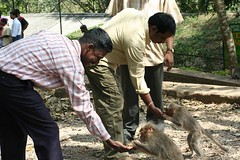
Click photo to see slideshow
or here for all Periyar pictures - Feeding frenzy – No doubt about it, everyone will agree that India has the best and most varied vegetarian food on earth. Masala dosa, vegetable biryani, Aloo gobi, palak paneer, mutter paneer masala, samosas, pakoras… I have to resist the urge to enumerate them all, but I would run out of space before I can exhaust the incredible variety of non-meat foods found in Indian eateries, from the tiny, three-table, suspicious-looking, crumbling street shack to the luxury, air-conditioned restaurants that cater mostly to tourists, the rich and the visiting Indian émigrés. Now I think I understand why most of my Indian acquaintances from back home are vegetarians, aside from the religious reasons which prohibit beef to people of Hindu faith – you can be a vegetarian here forever without getting bored. I haven’t ordered meat in two weeks, but I still dip my fork sometimes into Angela’s chicken tikka masala – old habits die hard...
That should be enough for a first installment. I have at least ten other subjects that beg for a place in the list but they will have to wait. There’s too much to say about this country and too little time...
To be continued...
Posted from Mamallapuram, Tamil Nadu, India



